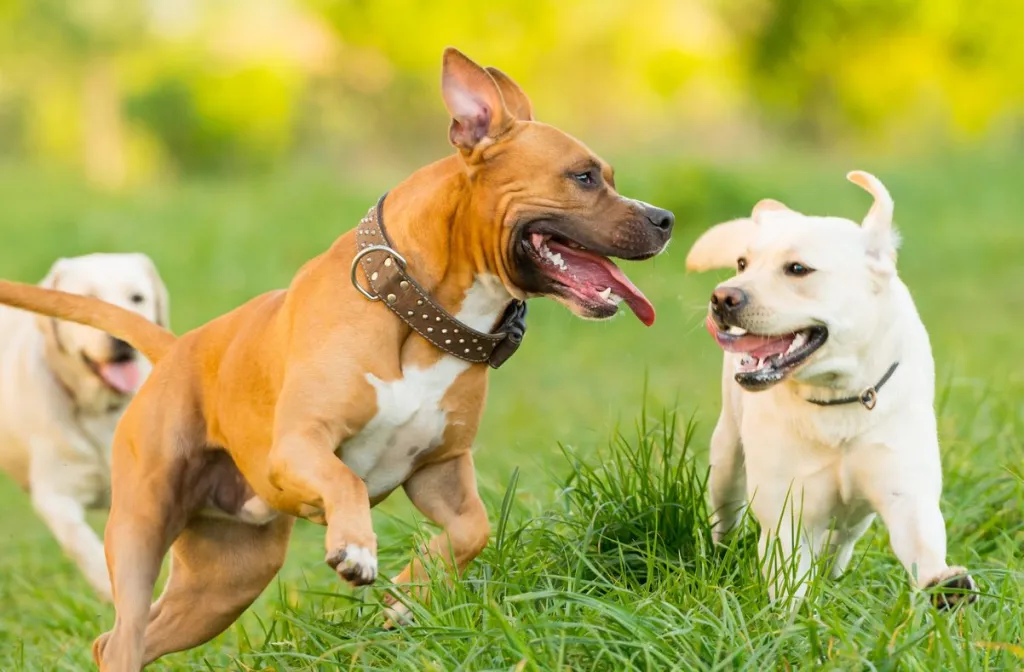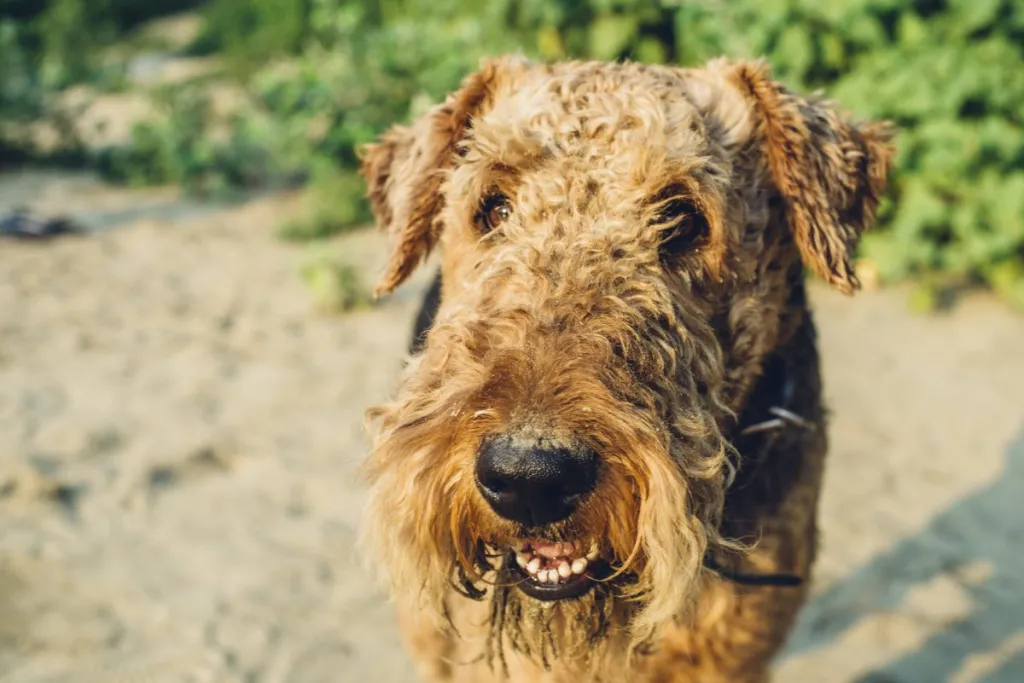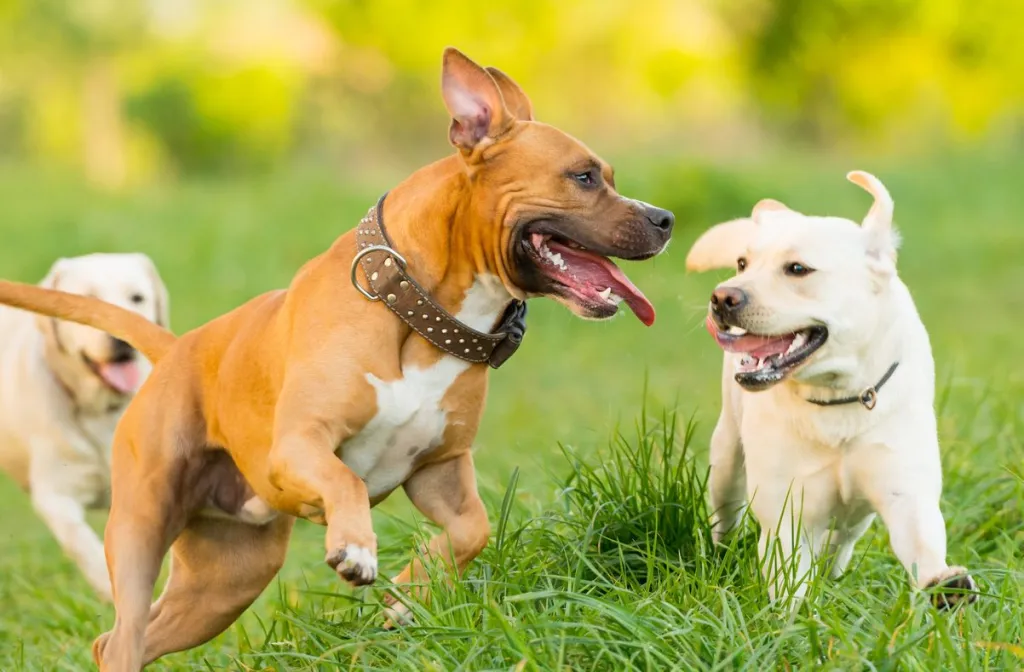
Border Terrier
The alert, good-natured Border Terrier was originally bred to assist in foxhunts by driving foxes out of their hiding places and out into the open for the hounds to chase. Nowadays, they make great family members who adore their humans.
Border Terriers still have a powerful drive to hunt and dig, as well as the energy level that enabled them to keep up with hunters on horseback. These traits can make them an aggravating pet for some humans; for others, a Border Terrier is a wonderful companion who play hard and love harder. They can adapt to apartment life, so long as they get plenty of exercise. Give this pup plenty of physical activity, and you’ll have a loyal and affectionate best buddy for life.
Reading: Border Terrier
When considering a Border Terrier, it’s advisable to prioritize adopting from rescue organizations or shelters to provide a loving home to a dog in need. However, if you decide to purchase a Border Terrier puppy, it’s crucial to choose a reputable breeder. Conduct thorough research to ensure that the breeder follows ethical practices and prioritizes the well-being of their dogs. Reputable Border Terrier breeders prioritize the health and temperament of their dogs, conduct necessary health screenings, and provide a nurturing environment for the puppies. This active approach ensures that you bring home a healthy and happy pup while discouraging unethical breeding practices.
Quick Facts
- Origin: England and Scotland
- Size: Small
- Breed group: Terrier
- Lifespan: 12-15 years
- Coat: Double coat with a wiry outer coat and a soft undercoat. Coat colors can be wheaten, grizzle and tan, or red.
- Temperament: Alert, intelligent, and playful
- Exercise needs: Moderate to high
- Training needs: Easy to train
- Health concerns: Generally healthy, but can be prone to certain health conditions, such as hip dysplasia, patellar luxation, and eye problems
- In the 2023 movie “Strays,” the character of a vengeful Border Terrier is voiced by Will Ferrell. While the American comedy may find favor with dog enthusiasts, it is not a film suitable for children.
Border Terrier Pictures
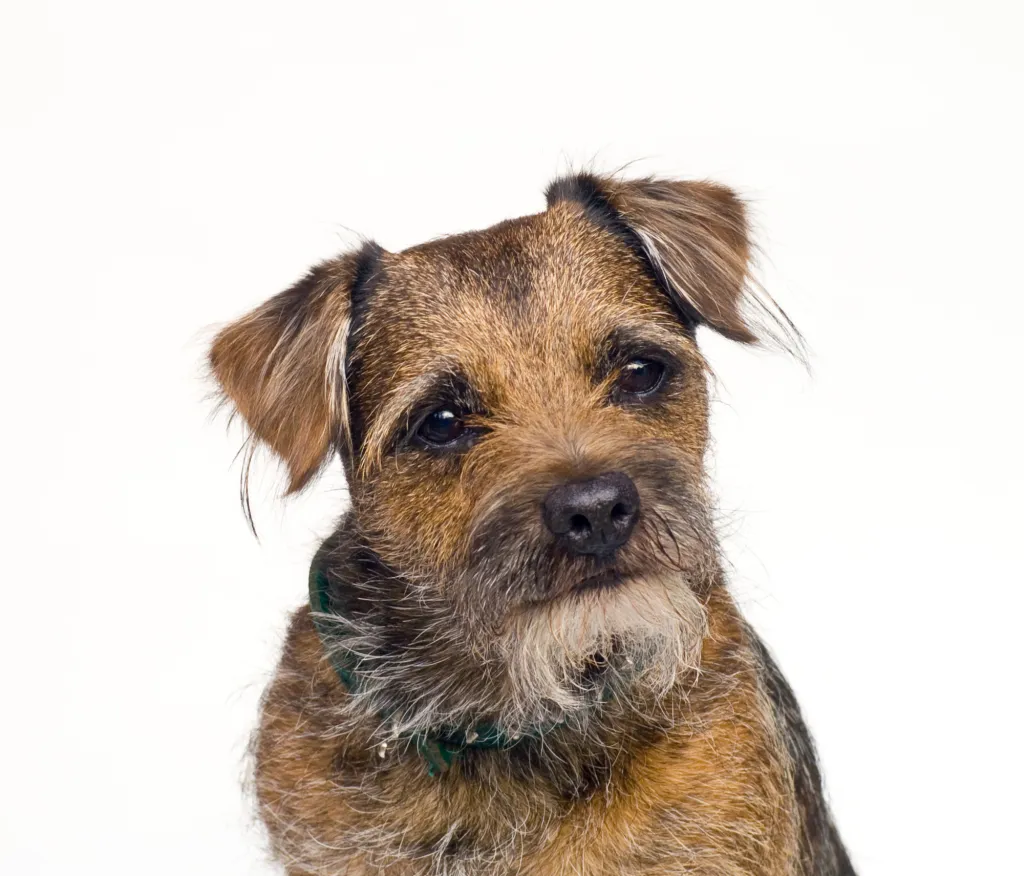
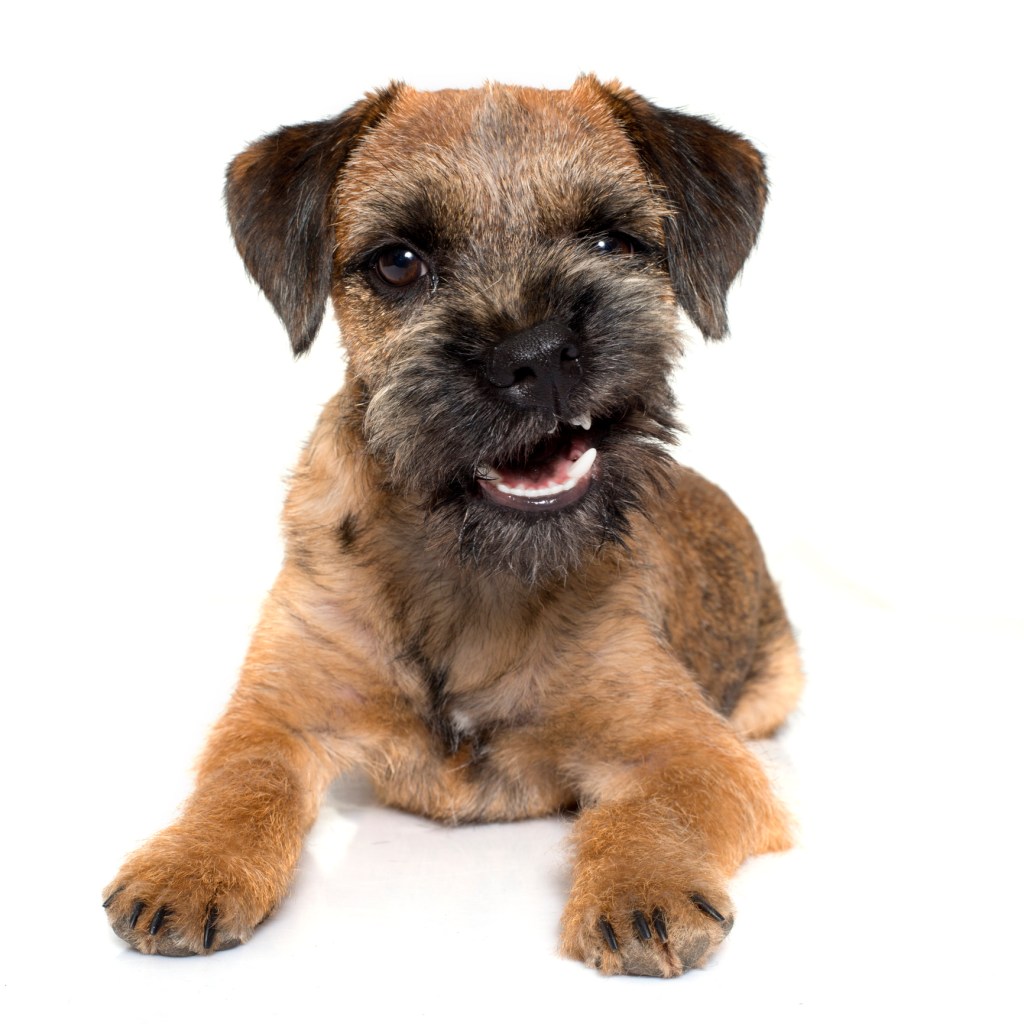
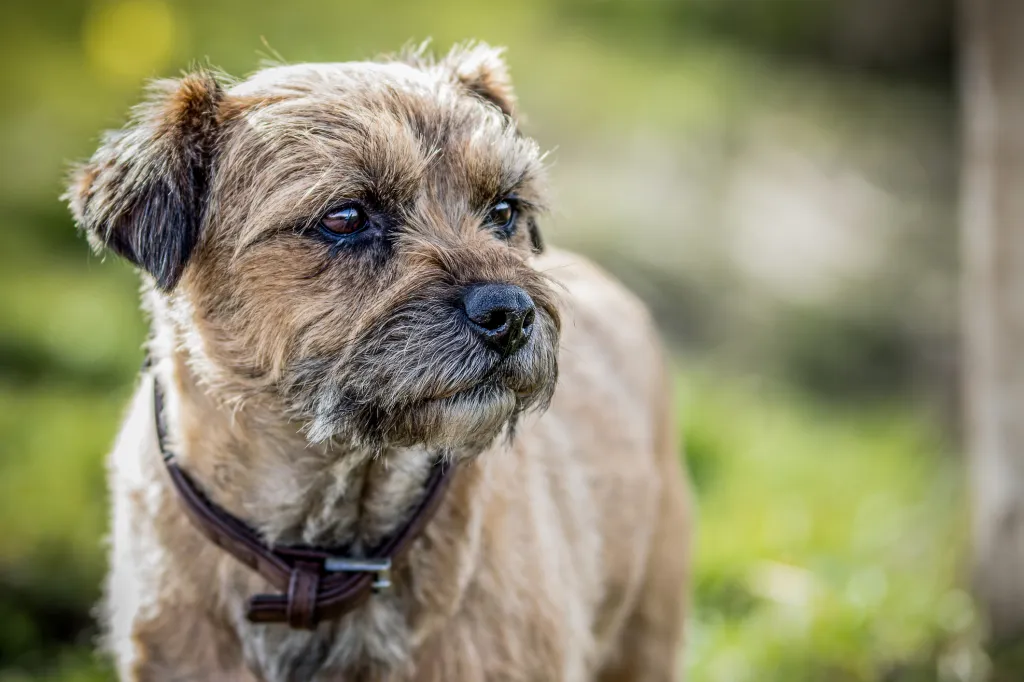
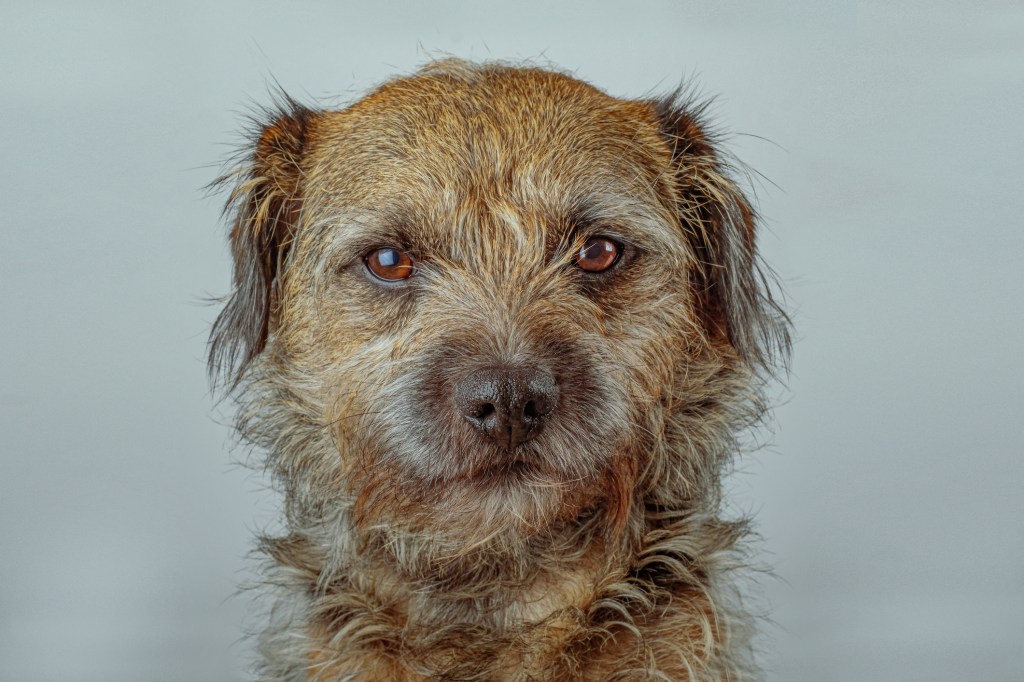
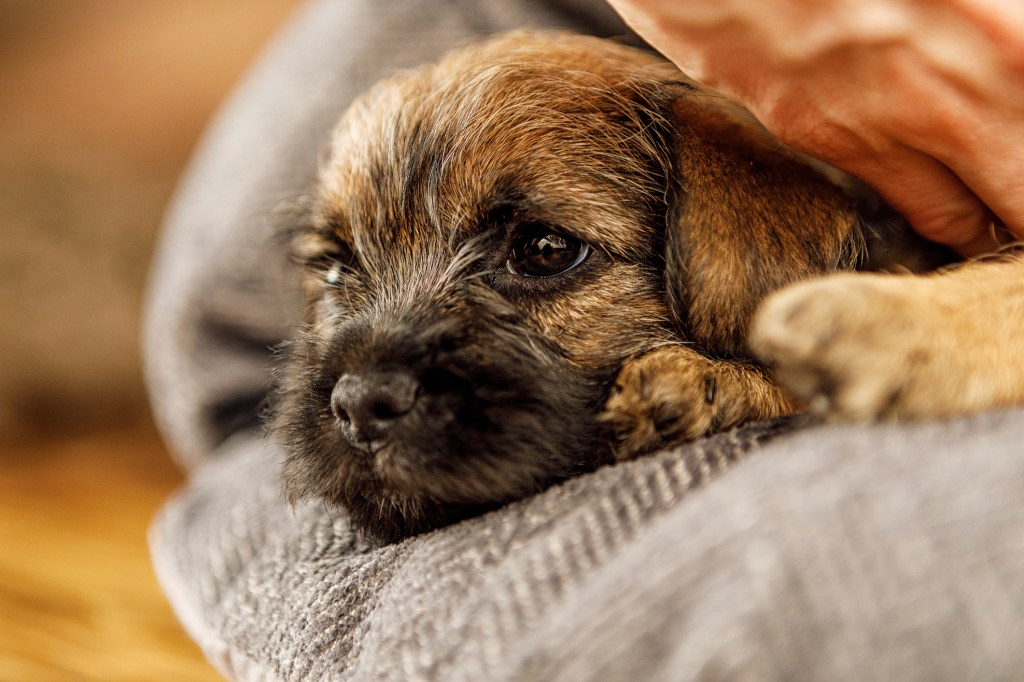
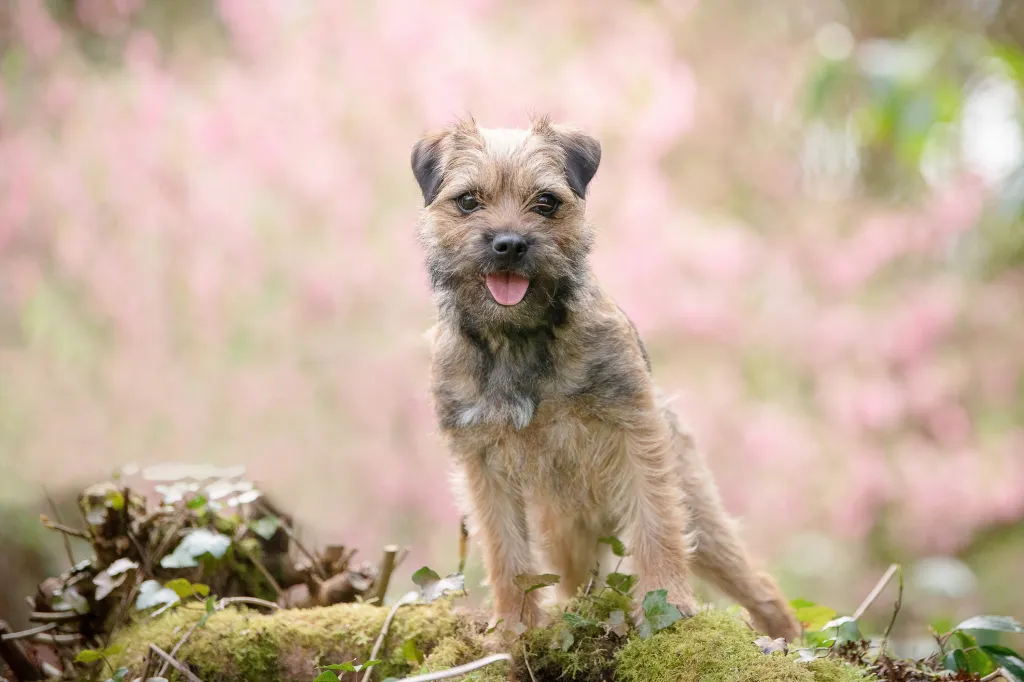
Adaptability
-
Adapts Well To Apartment Living
Looking for the best dog for your apartment? Contrary to popular belief, the suitability of dogs who adapt well to apartment living goes beyond its size. Apartment dwellers have a myriad of dog breeds to choose from as potential companions, with various factors to consider. Some large breeds can adapt well to apartment living and have lower activity levels. Others may require more space and possess higher energy levels. On the other hand, certain small dog breeds with abundant energy can still find contentment with indoor playtime or brisk walks.
However, when selecting a dog that adapts well apartments, it is essential to prioritize your neighbors. Opting for a pet that doesn’t excessively bark and behaves politely when encountering others in shared spaces like is crucial for maintaining a harmonious apartment environment.
In high-rise settings, it’s worth noting that numerous small dogs may exhibit a propensity for high energy and frequent barking. This makes them less suitable for apartment living. Therefore, desirable qualities in an apartment dog encompass being quiet, low-energy, and displaying polite behavior towards other residents.
Factors To Consider When Choosing A Dog For An Apartment
When considering dogs that adapt well to apartments, size alone should not be the sole determinant. Apartment dwellers have a wealth of dog breeds to choose from as potential furry companions. It’s important to remember that the size of your living space is just one factor to consider. While some larger breeds can adapt well to apartment living, with lower, others may require more space and have higher energy levels, making them less suitable for smaller apartments. Conversely, certain small dog breeds with higher energy levels can still thrive in apartments, finding contentment through indoor playtime or brisk walks. However, it is crucial to consider your neighbors’ comfort when selecting a dog. Opt for a pet that doesn’t bark excessively and behaves politely when interacting with others in shared spaces.
Therefore, it’s important to prioritize qualities such as being quiet, low-energy, calm indoors, and exhibiting good manners when living in close proximity to other residents. By considering these factors, you can find a dog that will adapt well to apartment living and create a harmonious living environment for everyone involved.
- Dogs Not Well Suited to Apartment Living
Read more : Greyhound
Click here for more information on this characteristic
-
Good For Novice Owners
Some dogs are simply easier than others; they take to training better and are fairly easygoing. They’re also resilient enough to bounce back from your mistakes or inconsistencies.
Dogs who are highly sensitive, independent thinking, or assertive may be harder for a first-time dog parent to manage. You’ll get your best match if you take your dog-owning experience into account as you choose your new pooch.
If you’re new to dog parenting, take a look at 101 Dog Tricks and read up on how to train your dog!
- See Dogs Who Are Good For Experienced Owners
Read more : Greyhound
Click here for more information on this characteristic
-
Sensitivity Level
Some dogs will let a stern reprimand roll off their backs, while others take even a dirty look to heart. Low-sensitivity dogs, also called “easygoing,” “tolerant,” “resilient,” and even “thick-skinned,” can better handle a noisy, chaotic household, a louder or more assertive owner, and an inconsistent or variable routine. Do you have young kids, throw lots of dinner parties, play in a garage band, or lead a hectic life? Go with a low-sensitivity dog.
- See Dogs Who Have Low Sensitivity Levels
Read more : Greyhound
Click here for more information on this characteristic
-
Tolerates Being Alone
Some breeds bond very closely with their family and are more prone to worry or even panic when left alone by their owner. An anxious dog can be very destructive–barking, whining, chewing, and otherwise causing mayhem. These breeds do best when a family member is home during the day or if you can take the dog to work.
- See Dogs Poorly Suited To Be Alone
Read more : Greyhound
Click here for more information on this characteristic
-
Tolerates Cold Weather
Breeds with very short coats and little or no undercoat or body fat, such as Greyhounds, are vulnerable to the cold. Dogs with a low cold tolerance need to live inside in cool climates and should have a jacket or sweater for chilly walks. You can find a great jacket for your dog here!
- Click here to see Dogs Poorly Suited For Cold Weather
Read more : Greyhound
Click here for more information on this characteristic
-
Tolerates Hot Weather
Dogs with thick, double coats are more vulnerable to overheating. So are breeds with short noses, like Bulldogs or Pugs, since they can’t pant as well to cool themselves off. If you want a heat-sensitive breed, your dog will need to stay indoors with you on warm or humid days, and you’ll need to be extra cautious about exercising your dog in the heat.
- See Dogs Poorly Suited For Hot Weather
Read more : Greyhound
Click here for more information on this characteristic
All-around friendliness
-
Affectionate With Family
When it comes to unconditional love and unwavering loyalty, few animals can rival the affectionate nature of dogs. These remarkable creatures have earned their reputation as man’s best friend, and it’s no wonder! Many breeds are particularly renowned for their love and devotion to their families. With their warm hearts and wagging tails, affectionate family dogs enrich the lives of their owners in countless ways.
While we like to think that all dogs are creatures of love, some breeds may be more outwardly affectionate than others. Some of this is due to temperament, breed group, and purpose. For example, dogs first bred for working or guarding independently of their human companions may show less affection than dogs specifically bred to be companion animals. Of course, this is no indication of the bond between a human and pup, but rather related to temperament and breed origin.
Affection may be demonstrated through a myriad of heartwarming behaviors. This may including tail-wagging greetings, cuddles on the couch, and an ever-present eagerness to be by their family’s side. This devotion extends to both adults and children, making dogs wonderful additions to family households. The warmth of a dog’s affection not only provides emotional support but also creates an environment of joy and connection within the family, fostering a sense of togetherness.
How To Know If A Dog Is Good With Families
The affectionate nature of family dogs extends beyond play and cuddles. Dogs have a remarkable ability to sense their owner’s emotions, offering comfort and support during difficult times. Whether it’s a wagging tail after a long day at work or a sympathetic nuzzle during moments of sadness, they prove time and again that they are attuned to their family’s needs.
It is important to note that not all dogs of the same breed will be equally affectionate. Some dogs may be more independent or aloof, while others may be more clingy or demanding of attention. The best way to find out how affectionate a dog is is to meet them in person and interact with them.
See Dogs Less Affectionate with Family
Read more : Greyhound
Click here for more information on this characteristic
-
Kid-Friendly
Being gentle with children, sturdy enough to handle the heavy-handed pets and hugs they can dish out, and having a blasé attitude toward running, screaming children are all traits that make a kid-friendly dog. You may be surprised by who’s on that list: Fierce-looking Boxers are considered good with children, as are American Staffordshire Terriers (which are considered Pit Bulls). Small, delicate, and potentially snappy dogs such as Chihuahuas aren’t always so family-friendly.
- See Dogs Who Are Not Kid Friendly
**All dogs are individuals. Our ratings are generalizations, and they’re not a guarantee of how any breed or individual dog will behave. Dogs from any breed can be good with children based on their past experiences, training on how to get along with kids, and personality. No matter what the breed or breed type, all dogs have strong jaws, sharp pointy teeth, and may bite in stressful circumstances. Young children and dogs of any breed should always be supervised by an adult and never left alone together, period.
Read more : Greyhound
Click here for more information on this characteristic
-
Dog Friendly
Friendliness toward dogs and friendliness toward humans are two completely different things. Some dogs may intimidate other dogs, even if they’re love-bugs with people; others are naturally more dog friend and would rather play than fight. It’s important to note that breed isn’t the only factor when it comes to how dog-friendly your pup will be. Sure, some dogs breeds first bred for working independently may not immediately gravitate towards other dogs, but early socialization plays a lot more into how dogs will interact than their origin. Dogs who lived with their littermates and mother until at least six to eight weeks of age or who spent lots of time playing with other dogs during puppyhood are more likely to have good canine social skills.
Still, some dog-friendly breeds are more pack-oriented and naturally thrive with other dogs. Dogs with this trait typically exhibit an innate ability to get along well with other pups. Dogs with this trait may be more eager to greet new dogs, display more social behavior at places like dog parks, or more confidently allow intimate sniffs from their canine acquaintances. This quality extends beyond mere tolerance and often manifests as a genuine enjoyment of the company of fellow canines, making these dogs ideal companions for those looking to build a multi-dog household. Additionally, they’ll pair well with pet parents hoping to take their pooch on social adventures, such as going to dog park or hanging out on dog-friendly patios.
Raising a dog-friendly dog
(Photo Credit: Stefan Cristian Cioata | Getty Images) While some dog breeds are more naturally inclined to make friends with other dogs, you may choose a puppy or adult dog that needs a little help. It’s may be common knowledge that there is a small window during a puppy’s early development when they are the most adaptable in terms of how they’ll interact with other dogs. You may, however, bring home an adult dog or a rescue and not get the opportunity. Not to fear! There are still many ways to help your pooch become dog-friendly.
Socialization is always the best way to ensure your dog becomes their most friendly self. You can help by exposing your pooch to as many sights, sounds, and environments as possible. Set up doggy playdates, enroll in dog training classes, or visit the dog park. Of course, be sure to do your research on dog training methods to ensure your dog will listen to you in social settings. Confidence is key!
- See Dogs Who Are Not So Dog Friendly
Read more : Greyhound
Click here for more information on this characteristic
-
Friendly Toward Strangers
Stranger-friendly dogs will greet guests with wagging tails and nuzzles; others are shy, indifferent, or even aggressive. However, no matter what the breed, a dog who was socialized and exposed to lots of different types, ages, sizes, and shapes of people as a puppy will respond better to strangers as an adult. Remember that even friendly dogs should stay on a good, strong leash like this one in public!
- See Dogs Who Are Less Friendly To Strangers
Read more : Greyhound
Click here for more information on this characteristic
Health And Grooming Needs
-
Amount Of Shedding
When considering adding a pup into your home, you may want to consider the amount of shedding your furry companion will experience. Regardless of the dog breed, you will want to be prepared for at least some amount of pet hair on your clothing and around your house. Of course, this amount can vary greatly as shedding tendencies differ significantly among breeds. Some dogs shed continuously, especially dog breeds with heavy double-coats or long fur. Others undergo seasonal “blowouts” and some hardly shed at all.
Having a set of grooming tools at your disposal is essential for tending to your dog’s coat. Deshedding tools are excellent for eliminating excess hair that can become trapped in your dog’s fur. There are also brushes designed to gently remove dead hair without causing discomfort to your dog’s skin. Grooming gloves and bathing brushes can aid in loosening dead hair during shampooing, making it easier to brush away. Clippers and a detangling spray effectively tackle matted fur. Additionally, home tools for managing pet hair on fabric and furniture can make a big difference. Pet tape rollers, fur brooms, and specialized vacuums can eliminate pet hair from carpet, clothing, and even furniture.
Read more : Northern Inuit Dog
If you’re someone who values a spotless environment, you might want to opt for a low-shedding breed. Otherwise, equip yourself with the right tools to fight the fur. Concerns about shedding shouldn’t prevent you from relishing your time at home with your dog. Establishing a consistent grooming regimen can significantly minimize the presence of loose hair in your living space and on your clothing. For additional guidance on managing dog shedding, explore our recommendations for addressing excessive shedding and designing your home with your pet (and their shedding tendencies) in mind.
Related:
How to Effectively Deal with Dog Shedding
4 Best Dog Brushes
Read more : Greyhound
Click here for more information on this characteristic
-
Drooling Potential
Drool-prone dogs may drape ropes of slobber on your arm and leave big, wet spots on your clothes when they come over to say hello. If you’ve got a laid-back attitude toward slobber, fine; but if you’re a neatnik, you may want to choose a dog who rates low in the drool department.
- See Dogs Who Are Not Big Droolers
Read more : Greyhound
Click here for more information on this characteristic
-
Easy To Groom
Some breeds are brush-and-go dogs; others require regular bathing, clipping, and other grooming just to stay clean and healthy. Consider whether you have the time and patience for a dog who needs a lot of grooming, or the money to pay someone else to do it.
- See Dogs Who Require More Grooming
Read more : Greyhound
Click here for more information on this characteristic
-
General Health
Due to poor breeding practices, some breeds are prone to certain genetic health problems, such as hip dysplasia. This doesn’t mean that every dog of that breed will develop those diseases; it just means that they’re at an increased risk.
If you’re adopting a puppy, it’s a good idea to find out which genetic illnesses are common to the breed you’re interested in. You may also want to ask if your shelter or rescue has information about the physical health of your potential pup’s parents and other relatives.
- See Dogs More Prone To Health Problems
Read more : Greyhound
Click here for more information on this characteristic
-
Potential For Weight Gain
Some breeds have hearty appetites and tend to put on weight easily. As in humans, being overweight can cause health problems in dogs. If you pick a breed that’s prone to packing on pounds, you’ll need to limit treats, make sure they get enough exercise, and measure out their daily food servings into regular meals rather than leaving food out all the time.
Ask your vet about your dog’s diet and what they recommend for feeding your pooch to keep them at a healthy weight. Weight gain can lead to other health issues or worsen problems like arthritis.
Read more : Greyhound
Click here for more information on this characteristic
-
Size
Get ready to meet the giants of the doggy world! Large dog breeds aren’t just big balls of fluff, they’re like loving, oversized teddy bears on a mission to steal your heart. Need some convincing? Let’s dive into the awesome benefits of owning one!
First things first, these pooches are a living security system! With their impressive size and thunderous barks, they’ll have any would-be intruder running for the hills. Talk about peace of mind! Plus, who needs an alarm when you’ve got a furry giant protecting your castle?
But that’s not all. Large dog breeds are all about loyalty and devotion. They’ll stick by your side through thick and thin, becoming your most dedicated bestie. Their love knows no bounds! When you have a giant fluffball showing you unconditional love, you’ll feel like the luckiest human on the planet.
Now, let’s talk about their talents. These big fellas are the ultimate working partners. With brains and brawn, they’re up for any challenge. From search and rescue missions to lending a helping paw to those in need, these dogs are superheroes in fur coats. They’ll make you proud every step of the way!
Don’t let their size fool you—these gentle giants have hearts as big as their paws. They’re incredible with kids and other pets, spreading their love like confetti. Their patience and kindness make them perfect family pets, ensuring harmony in your household.
Oh, and get ready to break a sweat! These dogs are fitness enthusiasts, and they’ll keep you on your toes. Daily walks, jogs, and play sessions will not only keep them happy and healthy but will also give you a reason to ditch the couch and join in on the fun. It’s a win-win situation!
So, if you’re ready for a dose of big love, go ahead and consider a large dog breed. They’re the best wing-dog you could ever ask for, ready to make your life a thousand times more exciting, loving, and downright awesome! Get ready for the big adventure of a lifetime!
- Medium-Sized Dogs
- Small Dogs
Read more : Greyhound
Click here for more information on this characteristic
Trainability
-
Easy To Train
Easy-to-train dogs are more adept at forming an association between a prompt (such as the word “sit”), an action (sitting), and a consequence (getting a treat) very quickly. Other dogs need more time, patience, and repetition during training.
Many breeds are intelligent but approach training with a “What’s in it for me?” attitude, in which case you’ll need to use rewards and games to teach them to want to comply with your requests.
Related:
10 Fun, Impressive Tricks You Can Teach Any Dog
Dogs Who Are Challenging To Train
Read more : Greyhound
Click here for more information on this characteristic
-
Intelligence
Dogs who were bred for jobs that require decision making, intelligence, and concentration, such as herding livestock, need to exercise their brains, just as dogs who were bred to run all day need to exercise their bodies. If they don’t get the mental stimulation they need, they’ll make their own work–usually with projects you won’t like, such as digging and chewing. Obedience training and interactive dog toys are good ways to give a dog a brain workout, as are dog sports and careers, such as agility and search and rescue.
- See Dogs Who Have Lower Intelligence
Read more : Greyhound
Click here for more information on this characteristic
-
Potential For Mouthiness
Common in most breeds during puppyhood and in Retriever breeds at all ages, mouthiness means a tendency to nip, chew, and play-bite (a soft, fairly painless bite that doesn’t puncture the skin). Mouthy dogs are more likely to use their mouths to hold or “herd” their human family members, and they need training to learn that it’s fine to gnaw on chew toys, but not on people. Mouthy breeds tend to really enjoy a game of fetch, as well as a good chew on a toy that’s been stuffed with kibble and treats.
Read more : Greyhound
Click here for more information on this characteristic
-
Prey Drive
Dogs with a high prey drive have an instinctive desire to stalk, capture, and prey upon potential food sources. Dogs who were bred to hunt, such as Terriers, have an inborn desire to chase — and sometimes kill — other animals. Anything whizzing by — such as cats, squirrels, and perhaps even cars — can trigger that instinct.
How to address a high prey drive
Off-leash adventures are too great a temptation for pups who will wander and hunt. Dogs who like to chase need to be leashed. And, even on a leash, you may experience your dog pulling on the leash to reach rodents or birds in their sight. Otherwise, these pups should be kept in a fenced area when outdoors. If your pup has a high prey drive, you’ll need a high, secure fence in your yard.
These breeds generally aren’t a good fit for homes with smaller pets that can look like prey, such as cats, hamsters, or small dogs. Breeds that were originally used for bird hunting, on the other hand, generally won’t chase, but you’ll probably have a hard time getting their attention when there are birds flying by.
Other behavioral concerns
Observing your dog’s prey drive, which is instinctual and biologically-rooted, is not the same as observing aggression. Much aggression is born of fear and anxiety, especially in the case of dog aggression toward humans.
The tendency to wander, even into oncoming traffic, can produce diasterious results for pups with predatory instincts. It can also lead to pups being bitten by snakes or attacked by other wild animals they may pursue while on the hunt.
- See Dogs Who Have Low Prey Drive
Read more : Greyhound
Click here for more information on this characteristic
-
Tendency To Bark Or Howl
Some breeds sound off more often than others. When choosing a breed, think about how often the dog vocalizes. Learn more about breeds with a tendency to bark or howl.
If you’re considering a hound, would you find their trademark howls musical or maddening? If you’re considering a watchdog, will a city full of suspicious “strangers” put your pup on permanent alert? Will the local wildlife literally drive your dog wild? Do you live in housing with noise restrictions? Do you have neighbors nearby? Then you may wish to choose a quieter dog.
- See Dogs Who Are Mostly Quiet
Read more : Greyhound
Click here for more information on this characteristic
-
Wanderlust Potential
Some breeds are more free-spirited than others. Nordic dogs such as Siberian Huskies were bred to range long distances, and given the chance, they’ll take off after anything that catches their interest. And many hounds simply must follow their noses–or that bunny that just ran across the path–even if it means leaving you behind.
- See Dogs Less Prone To Wander
Read more : Greyhound
Click here for more information on this characteristic
Exercise needs
-
Energy Level
High-energy dogs are always ready and waiting for action. Originally bred to perform a canine job of some sort, such as retrieving game for hunters or herding livestock, they have the stamina to put in a full workday. They need a significant amount of exercise and mental stimulation, and they’re more likely to spend time jumping, playing, and investigating any new sights and smells.
Low-energy dogs are the canine equivalent of a couch potato, content to doze the day away. When picking a breed, consider your own activity level and lifestyle, and think about whether you’ll find a frisky, energetic dog invigorating or annoying.
- See Dogs Who Have Low Energy
Read more : Greyhound
Click here for more information on this characteristic
-
Intensity
A vigorous dog may or may not have high energy, but everything they do, they do with vigor: they strain on the leash (until you train them not to), try to plow through obstacles, and even eats and drinks with great big gulps. These dynamos need lots of training to learn good manners, and may not be the best fit for a home with young kids or someone who’s elderly or frail. A low-vigor dog, on the other hand, has a more subdued approach to life.
- See Dogs With Low Intensity
Read more : Greyhound
Click here for more information on this characteristic
-
Exercise Needs
Some breeds do fine with a slow evening stroll around the block. Others need daily, vigorous exercise, especially those that were originally bred for physically demanding jobs, like herding or hunting.
Without enough exercise, these breeds may put on weight and vent their pent-up energy in ways you don’t like, such as barking, chewing, and digging. Breeds that need a lot of exercise are good for outdoorsy, active people, or those interested in training their dog to compete in a high-energy dog sport, such as agility.
- See Dogs Who Don’t Need Tons of Exercise
Read more : Greyhound
Click here for more information on this characteristic
-
Potential For Playfulness
Some dogs are perpetual puppies — always begging for a game — while others are more serious and sedate. Although a playful pup sounds endearing, consider how many games of fetch or tag you want to play each day, and whether you have kids or other dogs who can stand in as playmates for the dog.
- See Dogs Who Are Less Playful
Read more : Greyhound
Click here for more information on this characteristic
Border Terrier Overview
The Border Terrier is a small dog with an alert gaze, a powerful drive to hunt and dig, the typical high terrier energy level, and a good-natured personality. He’s intelligent, loyal, fearless, loving, and determined, and about as aggravating as any dog can be. After that intro, you may be quickly hitting the back button to hunt for a different breed — and that may be exactly what you should do. The Border Terrier is not for everyone, and before taking one home, you should be fully committed to taking his antics in stride with an amused shake of your head. But for the right people, Border Terriers are wonderful dogs who play hard and love harder.
They’re ideally suited to active families who can give them plenty of exercise and prevent them from practicing their escape-artist skills. Border Terriers need a securely fenced yard to keep them safe. Given a lack of supervision and enough time alone, they’ll dig under or climb over fences to go exploring. They’ll escape through holes in fences, through open gates and doors, or by any other means they can find. In fact, they’re bred to be able to cross any wall or scramble through any wire entanglement. The drive to chase prey is another inherent part of a Border Terrier’s personality. He’ll run right in front of a car in pursuit of a cat or rabbit. A Border Terrier’s more likely to die in an accident than of old age, so be prepared to protect him from himself. It’s also important to prevent boredom. A bored Border — one who’s left alone for long periods — becomes noisy and destructive.
This is not a dog that does well left out in the yard all day. You’ll likely come home to find your neighbors lined up to complain about the barking (which is meant to be heard from 10 feet underground) and your yard filled with holes indicating that your Border is well on his way to China. To keep your Border and the neighbors happy and your yard free of holes, give your Border at least half an hour per day of vigorous exercise. Besides keeping him entertained, exercise will help keep your Border trim — this small breed is prone to obesity. With their needs for companionship and activity met, Borders are happy dogs who generally get along well with everyone from children to strangers.
They’ll bark at noises, making them excellent watchdogs, but don’t expect them to be fierce guard dogs if an intruder enters your home. The Border Terrier can make you laugh and cry and laugh some more. He approaches training with an independent spirit, but he wants to please. If you praise him for a job done well, he’ll quickly learn anything you can teach. He can be a handful, but he’s always the apple of his owner’s eye.
Border Terrier Highlights
- Active: A Border Terrier is always on the go. They need plenty of exercise, such as walks, runs, and playtime in the yard.
- Energetic: Border Terriers are full of energy. They love to play fetch, go for walks, and explore their surroundings.
- Playful: Your Border Terrier will always be up for a good time. They love to play with toys, chase balls, and wrestle with their owners.
- Intelligent: Border Terriers are very intelligent dogs. They can learn a variety of commands and tricks.
- Easy to train: Border Terriers are easy to train. They are eager to please their owners and are quick to learn new things.
- Good with children: Border Terriers are good with children. They are gentle and patient with kids, and they love to play.
- Wary of strangers: Border Terriers can be wary of strangers. They may bark or growl at people they don’t know.
- Hunting instincts: Border Terriers have strong hunting instincts. They were originally bred to hunt foxes and badgers.
Border Terrier History
The Border Terrier originated in northeast England, near the border with Scotland, during the 18th century. He’s a result of the neverending battle between farmers and foxes. Borders were built to have a long, narrow, flexible body, the better to squeeze through narrow holes and flush foxes out of their hiding places, and legs long enough to follow the horses during a foxhunt.
Of course, they had stamina to spare, a weather-resistant coat, and thick, loose skin that wasn’t easily pierced by the teeth of their foxy adversaries. Early evidence of the breed includes a 1754 painting by Arthur Wentworth of two Border Terriers. While he was prized in England’s border country for his fearless and implacable nature, the Border Terrier was little known elsewhere. You would certainly have seen him at agricultural shows in Northumberland in the late 19th century, but on the whole dog fanciers took little notice of him until the early 20th century.
In 1920, he was recognized by England’s Kennel Club, and a breed club was formed. The first Border Terrier registered in the United States was Netherbyers Ricky, in 1930. For most of his existence, the Border Terrier has been an unknown, and his people prefer that he stay that way if it means protecting him from the ravages of popularity. Currently, he ranks 81st among the 155 breeds and varieties registered by the American Kennel Club.
Border Terrier Size
The Border Terrier is built to be big enough to keep up with hunters on horseback and small enough to squeeze into tight spaces. Males weigh 13 to 15.5 pounds; females 11.5 to 14 pounds. They stand 10 to 11 inches.
Border Terrier Personality
Considering that they’re terriers, Borders are pretty good-tempered, affectionate, obedient, and easily trained. They’re highly intelligent and quickly learn the cues that signal you’re going outside for a walk or to the office, when it’s mealtime, and what you like and don’t like them to chew.
They’re not so affectionate with other small animals. When it comes to going after prey (even if you don’t keep them as hunting dogs), they’re fearless and relentless.
Like every dog, Border Terriers need early socialization — exposure to many different people, sights, sounds, and experiences — when they’re young. Socialization helps ensure that your Border Terrier puppy grows up to be a well-rounded dog.
Border Terrier Health
Border Terriers are generally healthy, but like all breeds, they can get certain health conditions. Not all Border Terriers will get any or all of these diseases, but it’s important to be aware of them if you’re considering this breed. If you’re buying a puppy, find a good breeder who will show you health clearances for both your puppy’s parents. Health clearances prove that a dog’s been tested for and cleared of a particular condition.
In Border Terriers, you should expect to see health clearances from the Orthopedic Foundation for Animals for hips and from the Canine Eye Registry Foundation (CERF) certifying that the eyes are normal. Because some health problems don’t appear until a dog reaches full maturity, health clearances aren’t issued to dogs younger than 2 years old. Look for a breeder who doesn’t breed her dogs until they’re two or three years old. The following problems are not common in the breed, but they may occur:
- Hip Dysplasia is a condition in which the femur doesn’t fit snugly into the pelvic socket of the hip joint. Hip dysplasia can exist with or without clinical signs. Some dogs exhibit pain and lameness on one or both rear legs. As the dog ages, arthritis can develop. Screening for hip dysplasia can be done by the Orthopedic Foundation for Animals (OFA) or the University of Pennsylvania Hip Improvement Program (PennHIP). Dogs who have hip dysplasia shouldn’t be bred. If your dog displays signs of hip dysplasia, talk to your vet. Medication or surgery can help.
- Heart defects of various kinds can affect Border Terriers, the most common of which is pulmonic stenosis, a narrowing of the valve that separates the right chamber of the heart from the lungs. If your Border Terrier has a heart murmur, it may indicate that he has a heart condition that will need to be monitored and treated. Heart murmurs are caused by a disturbance in the blood flow through the chambers of the heart. They’re graded on their loudness, with one being very soft and six being very loud. If disease is evident, as diagnosed through x-rays and an echocardiogram, the dog may require medication, a special diet, and a reduction in the amount of exercise he gets. The best way to avoid heart defects is to check that the breeder has not used dogs with heart defects in her breeding program.
- Malocclusions, meaning the dog’s jaws don’t fit together correctly, are sometimes found in Border Terriers. There are three different types of incorrect bites. An overshot bite is when the upper jaw extends past the lower jaw. This causes difficulties in grasping; in more severe cases, the lower teeth can bite into the roof of the mouth, causing serious injuries. An undershot bite is when the lower jaw extends out past the upper jaw. Although it is standard in some breeds, it can cause difficulties in Border Terriers and may need to be corrected with surgery. The last type of incorrect bite is wry mouth, a twisting of the mouth caused when one side grows more quickly than the other. It causes difficulties with eating and grasping. In some cases, puppies grow out of these incorrect bites, but if the bite hasn’t become normal by the time the puppy is 10 months old, it may need to be corrected surgically. If this is the case, wait until the puppy has finished growing. Corrective surgeries can include tooth extraction, crown height reductions, or the use of spacers. Dogs with incorrect bites, even if the bite is corrected surgically, should not be used for breeding.
- Seizures can be caused by a number of factors and can occur at any time. Signs of a seizure include sudden trembling or shaking, sudden urination, stiffness, staring, slight muscle spasms, or a loss of consciousness. Seizures aren’t curable, but they can be successfully managed with medication.
- Patellar Luxation, also known as “slipped stifles,” is a common problem in small dogs. It is caused when the patella, which has three parts-the femur (thigh bone), patella (knee cap), and tibia (calf)-is not properly lined up. This causes lameness in the leg or an abnormal gait, sort of like a skip or a hop. It is a condition that is present at birth although the actual misalignment or luxation does not always occur until much later. The rubbing caused by patellar luxation can lead to arthritis, a degenerative joint disease. There are four grades of patellar luxation, ranging from grade I, an occasional luxation causing temporary lameness in the joint, to grade IV, in which the turning of the tibia is severe and the patella cannot be realigned manually. This gives the dog a bowlegged appearance. Severe grades of patellar luxation may require surgical repair.
- Hypothyroidism occurs when the body can’t maintain sufficient levels of thyroid hormones. Signs include weight gain, thinning coat, dry skin, slow heart rate, and sensitivity to cold. As hypothyroidism is a progressive condition, if you notice any of these signs, have your dog checked by your vet. Hypothyroidism is easily managed with daily medication, which must continue throughout the dog’s life. Because this is a disease of middle age, asking the breeder about the thyroid status of your puppy’s grandparents may give you a better idea of whether the problem occurs in the breeder’s lines.
- Cryptorchidism is a condition in which one or both testicles on the dog fail to descend and is common in small dogs. Testicles should descend fully by the time the puppy is 2 months old. If a testicle is retained, it is usually nonfunctional and can become cancerous if it is not removed. When the neutering takes place, a small incision is made to remove the undescended testicle(s); the normal testicle, if any, is removed in the regular manner.
Border Terrier Care
Border Terriers are family dogs and should live indoors with their people, not tied out in the backyard — although they do enjoy having access to a yard. Just make sure the fence is high and secure — these dogs can be expert escape artists. They’ll enjoy at least a half hour of exercise daily, such as a walk on leash, off-leash play in a fenced area, or a good game of fetch. Without enough exercise, Border Terriers are prone to weight gain and boredom.
Boredom can lead to destructive behavior and lots of barking. Border Terriers can be a trainer’s mixed blessing. On one hand, they’re eager to please and intelligent. They quickly learn house rules and other important dog etiquette such as housetraining, walking on leash, and greeting people politely (although they may never give up the habit of jumping up). When it comes to more advanced training, the real challenges begin. Border Terriers were developed to be independent because, during foxhunts, they had to work at a distance from their handlers.
This trait is still strong in the breed, and although they may listen to a command, they’ll decide for themselves when to obey it. Even so, use a light touch; they’re sensitive and respond poorly to harsh training techniques, which will break their spirit. To train your Border Terrier, look for a trainer who understands the terrier mentality and uses positive reinforcement techniques such as praise, play, and food rewards.
Given a regular schedule and plenty of opportunities to go to the bathroom outside, Border Terriers are easy to housetrain. Crate training helps with housetraining and will keep your Border Terrier from chewing things while you’re away. The crate is a tool, not a jail, however, so don’t keep your Border locked up in it for long periods. The best place for a Border Terrier is with you. Leash training is another must. It’s amazing how quickly a Border Terrier can run off in search of prey or adventure. This drive does not fade with age; if anything, it becomes stronger.
Border Terrier Feeding
Recommended daily amount: 1 1/8 to 1 3/8 cups of a high-quality dog food daily, divided into two meals. How much your adult dog eats depends on his size, age, build, metabolism, and activity level. Dogs are individuals, just like people, and they don’t all need the same amount of food. It almost goes without saying that a highly active dog will need more than a couch potato dog. The quality of dog food you buy also makes a difference — the better the dog food, the further it will go toward nourishing your dog and the less of it you’ll need to shake into your dog’s bowl.
Keep your Border Terrier in good shape by measuring his food and feeding him twice a day rather than leaving food out all the time. If you’re unsure whether he’s overweight, give him the eye test and the hands-on test. First, look down at him. You should be able to see a waist. Then place your hands on his back, thumbs along the spine, with the fingers spread downward. You should be able to feel but not see his ribs without having to press hard. If you can’t, he needs less food and more exercise. For more on feeding your Border Terrier, see our guidelines for buying the right food, feeding your puppy, and feeding your adult dog.
Border Terrier Coat Color And Grooming
The Border Terrier has a short, dense undercoat covered with a wiry topcoat. His skin is thick and loose — something that came in handy during his fox-hunting days, as it protects him from bites. The Border Terrier coat can be red, blue and tan, grizzle and tan, or wheaten (pale yellow or fawn). Some have a small patch of white on the chest. Weekly brushing and periodic stripping (every five to six months) of the rough terrier coat will keep your Border looking neat and tidy.
Your grooming kit should include a fine comb, a natural bristle brush, and a stripping knife (unless you opt for having a professional groomer take care of stripping the coat). Stripping involves plucking the dead hair by hand or removing it with a stripping knife or other stripping tool. It’s the kind of thing you can do while you and your Border are watching a 30-minute television show. Your Border’s breeder can show you how to strip the coat, or you can find a professional groomer who knows how to do it — not all do. You’ll find that by stripping the coat, you’ll have less Border hair decorating your clothing, furniture, and flooring. For easier care, you can clipper the coat, but the texture and color will become softer and lighter and the coat won’t be weather resistant. If you don’t mind the scruffy look, you can just leave the coat as is, with no stripping or clipping, but the coat may shed more. Border Terriers do not need to be bathed often — only when they’ve gotten into something gross and it’s really necessary.
Their coat naturally repels dirt and, with weekly brushing and a wipe-down with a damp cloth when needed, it should stay fairly clean. When you do bathe him, use a shampoo made for the rough terrier coat to help maintain its texture. Brush your Border Terrier’s teeth at least two or three times a week to remove tartar buildup and the accompanying bacteria.
Daily is better. Trim his nails once or twice a month, as needed. If you can hear the nail clicking on the floor, they’re too long. Short nails keep the feet in good condition, don’t get caught in the carpet and tear, and don’t scratch your legs when your Border Terrier enthusiastically jumps up to greet you. Start grooming your Border when he’s a puppy to get him used to it. Handle his paws frequently — dogs are touchy about their feet — and look inside his mouth and ears. Make grooming a positive experience filled with praise and rewards, and you’ll lay the groundwork for easy veterinary exams and other handling when he’s an adult.
Border Terrier Children And Other Pets
Border Terriers love kids and can match their energy levels all day long, but they’re a little rambunctious for households with children under the age of 6 years. As with any dog, always teach children how to approach and touch your Border Terrier, and supervise all interactions between dogs and young children to prevent any biting or ear pulling from either party.
Border Terriers usually get along well with other dogs and cats, especially if they’re introduced to them in puppyhood. They do best with dogs of the opposite sex. They’re likely to chase outdoor cats as well as squirrels and other wildlife, and they shouldn’t be trusted alone with pet birds or small, furry pets such as rabbits, hamsters, and gerbils.
Border Terrier Rescue Groups
Border Terriers are sometimes bought without any clear understanding of what goes into owning one, and these dogs often end up in the care of rescue groups, in need of adoption or fostering. Other Border Terriers end up in rescue because their owners have divorced or died. If you’re interested in adopting an adult Border Terriers who’s already gone through the destructive puppy stage and may already be trained, a rescue group is a good place to start.
- North American Border Terrier Welfare
Border Terrier Breed Organizations
Finding a reputable dog breeder is one of the most important decisions you will make when bringing a new dog into your life. Reputable breeders are committed to breeding healthy, well-socialized puppies that will make great companions. They will screen their breeding stock for health problems, socialize their puppies from a young age, and provide you with lifetime support.
On the other hand, backyard breeders are more interested in making a profit than in producing healthy, well-adjusted dogs. They may not screen their breeding stock for health problems, and they may not socialize their puppies properly. As a result, puppies from backyard breeders are more likely to have health problems and behavioral issues.
- Border Terrier Club of America, Inc.
More Info For You
- Dog Names
- Bringing Home Your Dog
- Training To Walk On-Leash
- Housetraining Puppies
- Feeding A Puppy
- Indoor Activities For Dogs
- Teaching Your Dog Tricks
- How To Take Pictures Of Your Dog
Source: https://gratefullbox.com
Category: Dog Breeds

